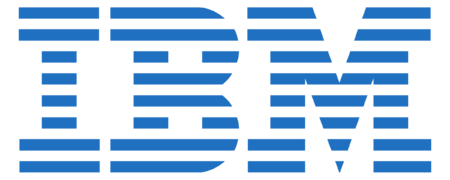IBM
- Members
International Business Machines Corporation (IBM) is an American multinational technology corporation headquartered in Armonk, New York, with operations in over 171 countries. The company began in 1911, founded in Endicott, New York, by trust businessman Charles Ranlett Flint, as the Computing-Tabulating-Recording Company (CTR) and was renamed "International Business Machines" in 1924. IBM is incorporated in New York.
Activities
| Amsterdam IoT Living Laboratory and Beacon mile | ||
We provide public networks, open infrastructure and data for developers to accelerate emerging IoT innovations for Smart City solutions
| ||

|
Blockchain and Public Health | |
| The Action cluster will aim to help collaborate with key stakeholders in the public health community to help create a Guide on best practices, case studies, and standards. The Guide will help guide key decision makers as they begin to formulate their policy positions on Blockchain and Public Health issues. | ||

|
IoT based waste management system-Smart Garbage Monitoring System | |
| Smart Garbage Monitoring System (SGMS) is a real time indicator of the level of trash at any given time. SGMS Optimize waste collection routes and ultimately reduce fuel consumption. It allows trash collectors to plan their daily/weekly pick up schedule. SGMS is to detect garbage level in Garbage Can. A unique identification number ( ID) is given to each can. As soon as the Garbage Can is full/ over flowing then a SMS is sent to the server from where all the garbage collection vehicles are allotted. | ||

|
Saitama City Smart Community Project | |
| We developed a Smart Community Information Platform (SCIP) for achieving security and privacy management of smart city data and providing smart city data services considering time-, privacy-, and location- critical problems. We are implementing the information platform for providing smart town services for 32,000 residents in 230-hectare area of Misono Town, Saitama City as a testing site of SCIP. | ||

|
Smart Work Learn Play - Participatory Smart City Innovation and Digital Inclusion in Public and Subsidized Housing | |
| Smart Work Learn Play, initiated by the Housing Authority of the City of Austin (HACA), with support from Next Century Cities, the Transit Empowerment Fund and the City of Austin’s Digital Inclusion and Transportation departments, aims to ensure that the design, deployment and use of smart cities technologies are inclusive and equitable. The program hires HACA-resident Smart City Ambassadors to work local government and corporate partners to: 1) teach HACA residents how to use digitally-enabled education, workforce and transportation tools; 2) advocate for and manage meaningful partnerships with private smart city technology providers; 3) engage in democratic processes, online and face-to-face with local and other government officials; 4) participate in design of smart city systems and tools with a wide array of actors.
This project has successfully conducted a small pilot phase with non-profit and corp partners. In this stage, we will build on that pilot to encompass a broad array of smart city issues, technologies, tools and diverse low income populations. | ||

|
SmartCU - Covenant University Smart City | |
Objectives
| ||

|
SmartShuttle | |
| Our second autonomous vehicle pilot will build upon the “lessons learned” from our GCTC 2015 “First Mile/Last Mile” study (GCTC Action Cluster SMOOTH). The City of Columbus was recently named one of the seven finalists in the US Department of Transportation Smart City Challenge. Our GCTC 2016 project will, therefore, concentrate on a scalable and replicable low speed automated shuttle solution for use in the Smart City of Columbus. This automated shuttle solution will use a small (two-seater) electric driverless vehicle with a scalable and replicable software, hardware control and decision making architecture. The eventual aim of the project is pilot deployment in an urban driving environment with low speed vehicles and intersections at/near the outdoor shopping area of Easton Town Center in Columbus. The scalable and replicable approach will enable the easy adaptation of the same system to other parts of the City of Columbus and to other similar pilot deployment sites in other cities in the US. | ||

|
Tech-secure City | |
| “Smart police” take advantage of ICT development which can ensure citizen’s high quality of life, improve effective and accurate services, reduce police’s burden and increase citizens’ satisfaction. That’s the reason we utilize ICT and innovative strategies to deploy and construct a safe city. | ||

|
TradeLens Shipping Solution | |
| As part of the TradeLens early adopter program, IBM and Maersk also announced that 94 organizations are actively involved or have agreed to participate on the TradeLens platform built on open standards. | ||
Details
IBM produces and sells computer hardware, middleware and software, and provides hosting and consulting services in areas ranging from mainframe computers to nanotechnology. IBM is also a major research organization, holding the record for most annual U.S. patents generated by a business (as of 2020) for 28 consecutive years.
Inventions by IBM include the automated teller machine (ATM), the floppy disk, the hard disk drive, the magnetic stripe card, the relational database, the SQL programming language, the UPC barcode, and dynamic random-access memory (DRAM). The IBM mainframe, exemplified by the System/360, was the dominant computing platform during the 1960s and 1970s.
IBM is one of 30 companies included in the Dow Jones Industrial Average and one of the world's largest employers, with over 345,000 employees as of 2020. At least 70% of IBM employees are based outside the United States, and the country with the largest number of IBM employees is India.

